Dictionary of Space Concepts
The Dictionary of Space Concepts (DSC) provides not only the basis for the advanced English language classes of the Multilingualism Programme; it also serves as larger online support platform for all UNIVERSEH students, with the aim of training specific space terminologies across various fields connected to the space sector. The DSC combines core space concepts and with helpful illustrations, all in an open-project format, which is freely available to everyone inside and outside UNIVERSEH. We welcome your contributions, comments, and expertise!
Do you want to take part of developing the Dictionary of Space Concepts? Enrol in the Collaborative Dictionary of Space Concepts.
Special | A | B | C | D | E | F | G | H | I | J | K | L | M | N | O | P | Q | R | S | T | U | V | W | X | Y | Z | ALL
G |
|---|
Galaxy Evolution | |||
|---|---|---|---|
Picture: Model of Evolution of Galaxy Image/Video/Audio Source: https://upload.wikimedia.org/wikipedia/commons/a/a3/Evolution_in_slow_motion.jpg Short Definition: Galaxy evolution or evolution of galaxy is a term that we have used for understanding the formation process and changes of galaxies since the beginning that made up the known universe. The term galaxy evolution also represents the models we form about the universe filled by the observed photons and the expansion since the big bang. At this point, the sizes, shapes and contents of all galaxies give us an idea about the formation and evolution of the universe. Detailed Definition: Galaxy evolution is a term used to understand the structure of the universe and the ongoing formation processes by comparing the morphology, brightness and content of galaxies with each other. The term galaxy evolution here studies galaxies in four main groups. These are Elliptical Galaxies, Lenticular Galaxies, Spiral Galaxies, and Irregular galaxies. The evolution process of galaxies in these four groups is examined under three main headings. These are Passive evolution (The state where the galaxy does not interact with any other galaxy [interactions or mergers] and thus does not produce star formations.), Interactions and Mergers (The state in which galaxies are affected by interacting with other galaxies), Secular Evolution (Situation in which processes by internal changes of galaxies affect their colour, luminosity and shape.) Etymology: From Latin ‘Galaxias’ and From Latin ‘ēvolūtiōnis’ (Unrolling/Unfolding) Sample Sentence(s): ‘’Radio telescopes have played a pivotal role in the understanding of galactic evolution.’’ (Galaxy Evolution, Cosmology and Dark Energy. (2018, May 30). Public Website. https://www.skatelescope.org/galaxyevolution/) ‘’Understanding how black holes shape their host galaxies is part of the study of galactic structure and evolution.’’ (Galaxy Formation and Evolution | Center for Astrophysics. (n.d.). https://www.cfa.harvard.edu/research/topic/galaxy-formation-and-evolution) Translations of Terms/Concepts into Partner Languages: French: Évolution de la galaxie German: Galaxienentwicklung Polish: Ewolucja galaktyki Swedish: Utveckling av galaxer Turkish: Galaksi Evrimi Links to Videos/Articles: https://www.britannica.com/science/galaxy/Evolution-of-galaxies-and-quasars https://www.jwst.nasa.gov/content/science/galaxies.html https://www.skatelescope.org/galaxyevolution/ https://www.cfa.harvard.edu/research/topic/galaxy-formation-and-evolution https://sites.astro.caltech.edu/~george/ay20/eaa-galevol.pdf https://astronomy.swin.edu.au/cosmos/E/evolution+of+galaxies https://www.youtube.com/watch?v=Rdd9KAUcvgQ&ab_channel=TakayukiSaitoh https://www.youtube.com/watch?v=_WtvU4Xn2UE&ab_channel=CaltechAstro | |||
Galaxy Merger | |||
|---|---|---|---|
 Source: https://www.eso.org/public/images/1016-galaxy_formation_merger/ Short Definition: A galaxy merger is the phenomenon of two or more galaxies colliding with each other, resulting in the formation of a new, enlarged galaxy. Detailed Definition: A galaxy merger occurs when two or more galaxies collide with each other, leading to the creation of a larger galaxy. Galaxy mergers are the most violent type of galaxy interaction. When a collision of several galaxies occurs, the stars and dark matter in each of them become affected, which has influence on both the orbits of the stars and the shape of the newly formed galaxy. During a merger, an increase in star formation can be observed, as the friction interaction of gas and dust contributes to the raise of energy in the resulting system. Galaxy mergers provide astronomers with the merger rate, which is a fundamental measurement of galaxy evolution and sheds some light on how galaxies have increased in size over time. Etymology: merge - Latin mergere"to dip, dip in, immerse, plunge" galaxy - Late Latin galaxias - Greek galaxías Sample Sentence(s): Galaxy mergers can be simulated in computers, to learn more about galaxy formation. Translations of Terms/Concepts into Partner Languages French: Fusion de galaxies German: Galaxienfusion Polish: Fuzja galaktyk Swedish: Galaxsammanslagning Links to Videos/Articles: https://www.eso.org/public/images/1016-galaxy_formation_merger/ https://www.thoughtco.com/interacting-galaxies-have-interesting-results-3072045 https://www.youtube.com/watch?v=4disyKG7XtU | |||
Gamma ray | |||
|---|---|---|---|
Source: Short Definition: Gamma rays are very high frequency electromagnetic radiation emitted as an outcome of radioactivity. Due to high frequency, gamma rays have very high energy. Natural sources of gamma emission originating on Earth are mainly an effect of radioactive decay and secondary radiation from atmospheric interactions among cosmic ray particles. Detailed Definition: A gamma ray, also known as gamma radiation, is a penetrating form of electromagnetic radiation originating from the radioactive decay of atomic nuclei. Gamma rays from radioactive decay are within the energy range starting at few kiloelectronvolts (keV) to roughly 8 megaelectronvolts (MeV), matching to the usual energy levels in nuclei among reasonably long lifetimes. The energy spectrum of gamma emission can be utilized to recognize the decaying radionuclides with a technique called gamma spectroscopy. Very-high-energy gamma rays in the 100–1000 teraelectronvolt (TeV) range have been observed from sources such as the Cygnus X-3 microquasar. Etymology: gamma - The third letter of the Greek alphabet (Γ, γ), Sample Sentence(s): "Solar flares emit across the entire electromagnetic spectrum, including gamma rays." Translations: French: Rayon gamma German: Gammastrahlung Polish: Promieniowanie gamma Swedish: Gammastrålning Links to Videos/Articles: | |||
Geosynchronous orbit | |||
|---|---|---|---|
Projection of the path traced by geosynchronous satellites of different inclinations. Source: Wikipedia Short Definition: | |||
Gravity | |||||||||||
|---|---|---|---|---|---|---|---|---|---|---|---|
Image/Video/Audio: Image/Video/Audio Source: Short Definition:
Detailed Definition:
Etymology:
Sample Sentence(s):
Translations of Terms/Concepts into Partner Languages [Multiple fields for entering the translation of the term in each partner language, additional languages can potentially be added, e.g. Russian, Chinese, Portuguese] French:
German:
Polish:
Swedish:
Links to Videos/Articles:
| |||||||||||
UNIVERSEH is an alliance of:
All rights reserved. Funded by the European Union. Views and opinions expressed are however those of the author(s) only and do not necessarily reflect those of the European Union or the European Education and Culture Executive Agency (EACEA). Neither the European Union nor the granting authority can be held responsible for them.








